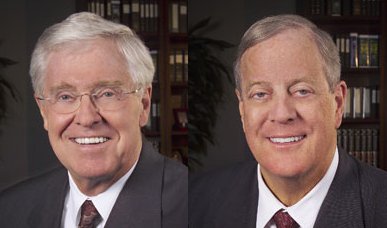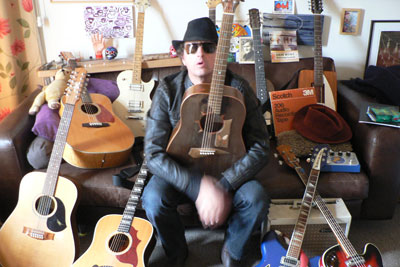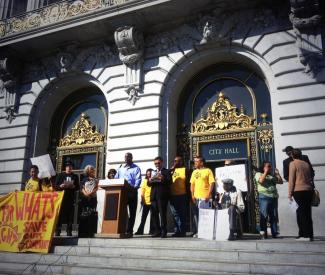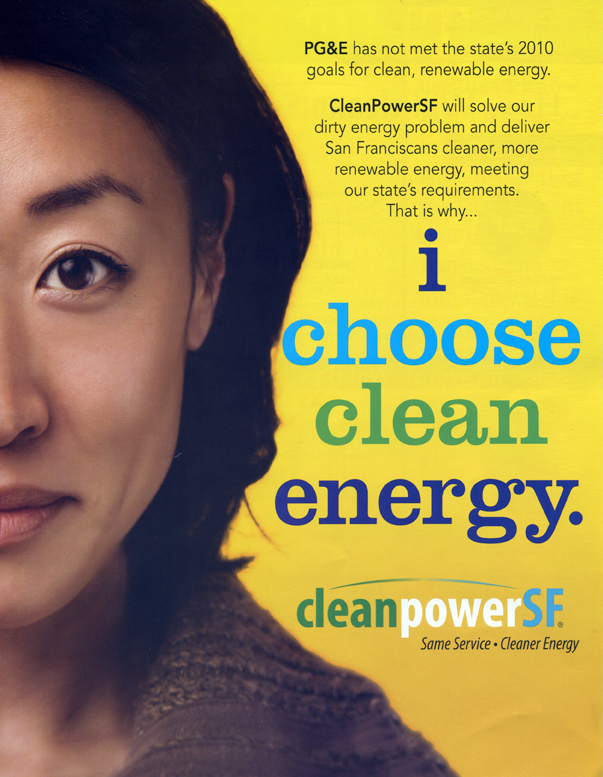Carson Lancaster is tired of the bullshit. He’s tired of watching the same handful of mainstream galleries hang the same artists and shun a majority of San Francisco’s young, talented artists. “It’s like that scene in Scanners. You know, the one where the guy’s head explodes? That’s what it feels like every time I walk into one of those places,” he said.
Lancaster is the owner of Book & Job, an art gallery that seeks to do exactly the opposite: make San Francisco’s art market accessible to both artists and consumers. Located on Geary and Hyde Streets, Book & Job blends into the grit of the Tenderloin and in no way resembles the blue-chip megaliths huddled toward Union Square. The space is tiny. There’s no team of attractive sales people standing at the entrance, no bubbly event photographers milling around, no tuxedos, and no free champagne.
However, it isn’t uncommon to see a small throng of young people spilling from the entrance on a given Saturday night, or passers-by (likely coming from galleries down the street) stopping in their tracks to gander at the commotion — looking for something, anything, that slightly resembles uncharted territory: candid photographs from inside of a ramshackle San Francisco mosque, say, or a couple of naked male performers feeding each other wedding cake while dancing to Celine Dion. That, Lancaster feels, is an art scene.
Which is why Lancaster is all ears if an artist wants to show work at Book & Job. Though it began mainly for photographers, in the past couple of years the small gallery has broadened its horizons to include just about anything — paintings, zines, and performances. “People come in all the time and say, ‘I like this place because it’s pure, because it’s real, because it’s no bullshit,” he continued. “It’s known in the community as the no bullshit gallery.”
Sat/13, Lancaster’s walls will feature work from an analog photography club called Find Rangers, which sent out an open call to artists around the world. Lancaster and a group of colleagues started the club for many of the same reasons he opened his gallery. “It’s a grassroots affair,” he said.
As a former photography student at Academy of Art University, Lancaster wondered why many of the best students would flee San Francisco after graduating, but he eventually came to a realization: “The San Francisco art scene sucks. It is very close-minded, unfriendly, not open to interpretation, set in the same ways. And for young artists at CCA [California College of the Arts], SFAI [San Francisco Art Institute], and Academy of Art, to go to an art gallery in the city [and inquire about showing their work], they’re going to be told to go fuck themselves in so many words.”
Lancaster spoke of a disconnect between San Francisco’s relatively insular gallery scene and the high number of art students in the area. From 2002 to 2012, San Francisco received more art funding per capita than any another city in the nation, according to a 2014 study released by the Cultural Policy Center at the University of Chicago. And yet, the city’s abundance of talented artists cannot break in and are thus forced to seek greener pastures, usually in New York or Los Angeles.
Lancaster believes that this is largely because art galleries in San Francisco have tight business models, and that giving artists a chance just doesn’t allow them to stay afloat. These galleries, he said, would rather show artists they know can sell. “They have their roster of artists,” he explained. “December is Ferris Plock, or September is Jay Howell or Mike Giant, and it’s the same names over and over again. It’s more like a meat factory. It’s the meat aisle.”
This is especially prevalent nowadays, Lancaster explained, as many of the higher-end galleries are struggling themselves with out-of-control rents and the city’s shifting cultural values. In the past year, particularly downtown, a rash of galleries have either relocated or completely shuttered.
But Lancaster isn’t worried about Book & Job. His lease is written such that his rent stays fixed — and relatively low — until 2022. For next eight years, Book & Job cannot be priced out, even as the neighborhood continues to transform around it. “This is place is blowing up,” he said, pointing out the new cafés and restaurants that are now sprouting up around the Tenderloin. All the same, in the coming years Book & Job will serve as a small preservation of what remains of city’s DIY ethos, a channel through which local artists can be discovered without having to flee the city.
“It’s a really nervy thing to do,” Sarah Barsness, one of Lancaster’s former Academy of Art teachers, says of the gallery. She explained that it’s extremely difficult to open a successful art gallery in the city, let alone one as “subversive” as Book & Job. “He’s doing the thing that you’re never supposed to do, which is having a lot of work that he sells for nothing, and spreading it out to a different, broader population — younger people and fellow students,” she explained.
She even compared Lancaster to Andy Warhol and other pioneers of the pop art movement, who sought to strip art of its “preciousness” and “elitism” by selling prints for pennies on the dollar. Ultimately, Barsness explained, this made art more democratic. “It’s really important right now because we’re at a high point of elitists,” she said. “It’s over the top.”
By making art more democratic, she explained, galleries like Book & Job “bring artists back into the conversation,” making art more about art and less about business. But Barsness believes many San Francisco galleries have always operated this way. “San Francisco collectors are notorious for not buying San Francisco art,” she said, explaining that galleries have had to survive by bringing in work from other cities.
While Barsness feels that the economic cards are not stacked in Lancaster’s favor, she feels that Book & Job embodies much of what art stands for. “Art is not supposed to preach. It’s supposed to show you an alternative way of thinking, so that questions emerge,” she said. “[Book & Job] is a little work of art, in that sense, making you ask: Do galleries have to operate this way? Is it wrong to have galleries operate this way? And why is it wrong?”
For Lancaster, however, Book & Job’s place in the art world isn’t so much subversive as it is deeply personal. In March, Lancaster found his close friend, renowned San Francisco artist Shawn Whisenant, dead from a health issue in the back room of the gallery, where he had been sleeping. Whisenant was a San Francisco street artist and photographer and one of the last “true” San Francisco artists, according to KQED’s Kristin Farr, who remembered him fondly after his passing.
And for Lancaster, Whisenant’s artistic ethos of “no B.S.” will always shape how Book & Job is run. A day doesn’t go by in which Lancaster doesn’t think about what Whisenant would have done. “He’s the angel and devil on my shoulder,” he said.
The room in which Whisenant died has been converted into a dark room, and for now Lancaster plans to share it with other like-minded photographers and use it to hone his own skills. “If someone is checking their phone and they see my open call [for a Find Rangers Camera Club exhibit], and they dust off their camera and buy a roll of film, I’m doing something right,” he said. “That’s not just me selling a booklet to help pay rent, that’s helping someone’s creativity … and that’s really cool.”
Find Rangers Camera Club exhibit
Sat/13, 7-11pm
Book & Job Gallery
838 Geary, SF





